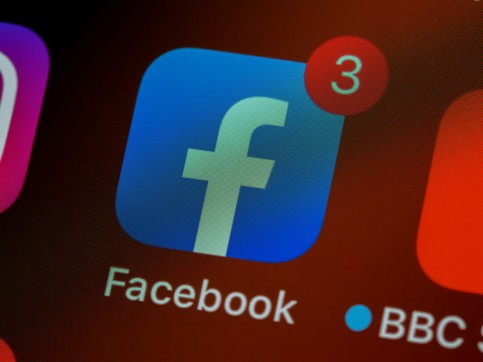The Ins and Outs of Facebook Fundraising: A Complete Guide

Facebook fundraising can get a bad reputation, especially when organizations fail to see the opportunities to engage and retain a new generation of supporters.
However, Facebook fundraising is much more than a helpful boost to your organization’s online donations. With intentional actions from your nonprofit to express gratitude and connect with supporters, Facebook fundraising offers the first step toward building lifelong philanthropic relationships.
At GoodUnited, we work with nonprofit organizations to raise their relationships with social media supporters. When it comes to Facebook Fundraising, we wrote the ultimate guide! We’re going to cover what your organization needs to know to truly make the most of the platform by discussing the following points:
- Overview of Facebook Fundraising
- How to Raise Your Relationships with Facebook Fundraising Supporters
A basic understanding of Facebook’s fundraising tools is important, to ensure you’re set up to receive all of the technical benefits that the platform offers for nonprofit organizations.
Let’s walk through an overview of some of these technicalities before examining how you can improve your efforts further.
Overview of Facebook Fundraising
As a modern nonprofit organization, you probably already encounter Facebook fundraising to some degree. Your organization almost certainly has a Facebook profile used to connect with donors and volunteers alike, and your supporters are likely already conducting fundraisers on your behalf.
However, for some organizations, their understanding ends there— occasionally, they receive a check from Facebook fundraising in the mail, but the specifics are more opaque. Whether that describes your organization or not, it’s helpful to start with a review of the basics to fundraising on this handy social media channel. Let’s cover a few specifics to ensure we’re building from the same foundation.
How do users start Facebook fundraisers?
While Facebook fundraisers are entirely user-led, meaning that users initiate and complete the fundraising effort independently, it’s important for your organization to understand the process. With this understanding, you can educate supporters about the opportunity and answer any questions that arise.
To start a Facebook fundraiser, a user completes the following steps:
- Click on “Fundraisers” in their News Feed.
- Click on “Raise Money.”
- Select either “Nonprofit” or “Charity.”
- Search for the charitable organization that they want to raise for and select it.
- Choose a cover photo and write a description about their connection to your cause.
- Set their goal amount and hit “Create!”
While this is largely hands-off for your nonprofit, you can take steps to maintain your nonprofit’s branding in users fundraisers. For example, choose an engaging and impactful mission statement and cover photo for your nonprofit’s page. This information will auto-populate in fundraisers and users often choose to keep that information rather than replacing it.
How does Facebook fundraiser payout work?
Understandably, you may be a bit more concerned about how your organization receives the donations raised through Facebook fundraisers. In North America, the payout process can go one of two ways:
- Payout processed via Facebook Payments. This is a direct payout process through which your nonprofit receives biweekly direct deposits. You have to sign up and be a verified nonprofit to have payments processed via Payments.
- Payout Processed via Network for Good. Network is a donor-advised fund, a specialized type of charitable giving account, that processes donations for nonprofits that aren’t registered with Payments. It can take multiple months and payments will be sent via mail unless you choose to register directly with the DAF in which case payments will be sent via direct deposit.
While we’ve noted the key differences here, you can also explore the process in more detail in this GoodUnited guide to Facebook fundraiser payout. In the guide, we recommend that nonprofits sign up for Payments rather than going through Network, as it can be a faster, more convenient process and provide more data for the organization to analyze.
How can we elevate our social fundraising efforts?
While it’s important to understand the technicalities of Facebook fundraising, we’ve found that true success on the platform is much more than the posts you share, the birthday fundraisers started on your behalf, and the money you raise.
Just as with fundraising events, major gifts fundraising, planned giving, pledge fundraisers and more— the relationships you build with supporters are what fuels your organization’s work and advances your mission.
Forging strong connections and building intimacy with each and every peer-to-peer supporter builds the pipeline to lifelong support, whether through volunteering, sustained monthly giving, or even major gifts down the line. This is the difference between a one-off, one-time birthday fundraiser and a lifetime of support.
So, let’s walk through a few steps you can take to raise your relationships with Facebook fundraisers and grow your donor base with the next generation of givers.
How to Raise Your Relationships with Facebook Fundraising Supporters
Express gratitude for all participants.
Every supporter should feel heard and appreciated for their contributions, creating a direct connection between their efforts and the advancement of your mission. On Facebook, do this by posting a thank-you note on each individual fundraiser.
Use Facebook’s newly unveiled “Sort & Filter” tool to do this. On your nonprofit’s Facebook page, view the Fundraisers tab and “Sort” to show the most recently created fundraisers first. Then, “Filter” to only show those who you haven’t thanked yet.
Go through and post a personalized thank-you note, expressing just how valuable each user’s efforts are for your mission. Then, include some actionable next steps supporters can take, such as:
- Opting in to connect with your nonprofit via Messenger (more on this later).
- Joining a Facebook group for Facebook fundraisers.
- Reviewing other opportunities to engage on your website.
While we focus on thanking users who create fundraisers in this section, you’ll want to thank donors as well. This can be more challenging as Facebook provides limited information about donors and only provides contact information for donors (email address) when the donor opts in to share it. You should send donor thank-you letters to those who provide additional information in this manner.
Provide engaging, inspiring experiences for social supporters.
Once you’ve thanked Facebook fundraiser participants, it’s time to inspire them to continue giving their time, resources, and networks going forward.
One way to do this is to use Facebook groups. Did you know that Facebook actually favors groups in its algorithm, so your supporters are more likely to see a post you make in a group than one made by their individual friends?
Beyond the increased visibility, groups are the perfect conduit for:
- Facebook-based peer-to-peer events. Whether you’re planning fully virtual, hybrid, or socially distanced in-person events, Facebook groups are powerful tools to create community between participants. They can share fundraising tips, donate to one another’s fundraiser, and connect over their shared interest in your organization.
- Tailored communication with your supporters. If you create a group for users that specifically are interested in conducting Facebook fundraisers on your behalf, you can share information tailored to that audience. Whether sharing fundraising tips, perks, or exclusive information, you can engage with these champions of your cause on a new level.
Another benefit of groups? You can use them to invite users to connect with your organization on Facebook Messenger.
We’ve found that one-on-one, in-channel conversations with social supporters through Messenger are key to raising your relationships with each individual. Through Messenger, you can:
- Tailor communications to the individual supporter. Whether they’re seeking fundraising tips, encouragement, or additional opportunities to engage, you can provide that information via Messenger.
- Learn more about your social supporters. You can share surveys and ask one-off questions to understand what draws users to your organization and how you can inspire them to continue engaging.
- Stay in contact with champions of your organization year-round. You can chat with users during their fundraising campaigns and well beyond, showing supporters that you care to interact with them even when they’re not directly raising money for your organization.
With Messenger, you can raise your relationships with supporters by staying front-of-mind, relevant, and personal. And, you can work with an organization that provides managed services for social media fundraising to grow these relationships at scale through custom, automated messaging sequences.
As you’ve seen, Facebook fundraising is much more than fundraising goals reached, money raised, and a few additional social followers. It’s the first step toward impactful, long-term relationships with supporters— but, only if your organization plays your cards right.
By expressing gratitude and creating inspiring, engaging experiences, you can use Facebook as a donor stewardship tool to raise your relationships with the next generation of supporters. With these tips, you’re off to a great start. Good luck!

